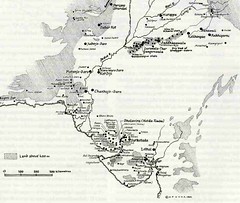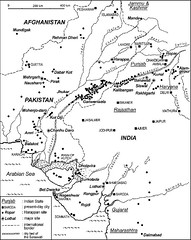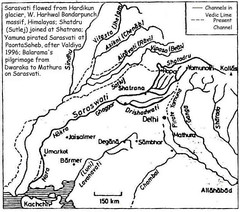Here are some samples of dhimmi-tude :
Sri Lankan Maids in the Middle East
Hindus in Malaysia
Christians in Pakistan
Apostates in Malaysia
UK: Canon Cinema EOS C50 in Stock at Wex Photo
10 hours ago
Partly collected thoughts.
This article is political propaganda: the writers stress the need to expedite the process of collecting and using intelligence, but fail to mention there is a legally established procedure: the administration may collect and use the information, then has up to 72 hours to present its case to the special court for review and approval.
An innocent omission? I don't believe it for a moment: these are lawyers arguing a point of view as part of a P.R. campaign to ease pressure on Congress to deal with this administration ignoring laws that have been on the books for years, and they know it. For a president to authorize breaking a law is not a trivial matter (even if done in consultation with selected members of Congress), and they're trying to avoid a public debate of this very serious issue.
I am also partial: I have long disagreed with many of President Bush decisions, and doubted these decisions will turn out to be in the best interest of the American people; I believe we have seen too much rush to judgment, too little focus on consensus or bipartisanship, a set of changing and blurry motivations for war, duplicitous moral standards how to carry this war forward, poor policy execution, and a much too political use of the presidential powers.
I may be wrong and blinded by mistrust. The intent may be to streamline, not to circumvent. This president may be fighting to keep America safe in the best way he knows. He may be asking us to give his administration exceptional powers, just to match the capabilities of an exceptional enemy of our country.
Regardless of motivation, the effect is still the same: the rule of law is treated as an inconvenience that can only be tolerated on sunny days, and this administration has engaged in all kinds of legal contortions to justify torture, indefinite detentions, use of public funds for their own political benefit, keeping a veil of secrecy over the operation of the executive branch, and now ignoring a fairly explicit procedure cast into law by Congress. What is at stake is not just the 4th Amendment, but the very idea of having separation of powers and a Constitution and sticking with them through good and bad times: if an administration has the privilege to choose which parts of the law are inconvenient and may be ignored, why bother having laws at all?
Ancient Greeks experimented with the idea of choosing a tyrant to streamline the decision-making process in times of war. Their experiment failed so miserably, that the word tyrant changed meanings from the original "sole ruler" to signify "someone who has absolute power and exerts it brutally and oppressively".
To refer to the original meaning, one speaks nowadays of "benevolent tyrants". Using that language here I will state what concerns me to the extreme: giving up exceptional powers to a benevolent tyrant is no guarantee that future tyrants using those powers will remain benevolent. The Founding Fathers knew this and left us a document that separates powers and places strict limits to the branches of government holding those powers.
President Bush swore to uphold this document, and the gentlemen that authored the article are now asking us on his behalf to consider he had to make an exception. I say no.
SAUDI ARABIA Puthen Veetil Abdul Latheef Noushad (m), Indian national
Puthen Veetil Abdul Latheef Noushad has reportedly been sentenced to have an eye removed. The sentence is said to have been passed to a higher court and if upheld, could be inflicted at any time.
According to press reports, the sentence is punishment for partially blinding another man during a fight in April 2003. He was apparently working at a petrol station in the city of Dammam, in the eastern region when he had an argument with a customer over payment. A fight broke out which left the other man with partial loss of sight. Puthen Veetil Abdul Latheef Noushad said that he was acting in self defence. He is detained in al-Dammam prison, Dammam.
The injured man is said to have been given the option of pardoning Puthen Veetil Abdul Latheef Noushad in exchange for financial compensation from his sponsor, but refused.



...it would seem distinctly odd for a people to adopt a foreign language without some sort of powerful military or cultural motivation.That cuts to the heart of the matter - the question boils down to whether the language was foreign!
But I do know that unless North America makes it possible for people to passionate about mathematics and science without being ashamed, we're in deep trouble.
........ And when Roger tragically died, I had nowhere to turn for a high energy physics advisor. I finished up my dissertation in nonlinear science under my previous advisor, and hit the dilemma. I wanted to work in GR and QFT — they have always interested me the most. But I had nobody to introduce me to opportunities in either field, and the main community was going for strings in a big way.
However, I had been lucky enough to have another wild option. My graduate fellowship had paid me on top of the money I earned as a TA, and I’d invested that in stocks while the market was booming. So I had a nice little nest egg built up — enough to last five years or so at my graduate student spending level. And, thanks to the net, I figured I could work anywhere, on the physics I wanted. So I wandered a bit, and settled in the most beautiful place I could find — Maui. I’ve been finding my own way ever since, working on what I want, and publishing only when I’ve thought I figured out something significantly cool. Well, after five years, and less than stellar stock market performance, the money ran out. So I’ve had to find money making projects to work on here and there while dedicating most of my time to working on physics — traveling down one theoretical path after another.
Earlier this month, Ali Rahbari, conductor of Tehran's symphony orchestra, resigned and left Iran to protest the treatment of the music industry in Iran.
Before leaving, he and his orchestra performed Beethoven's Ninth Symphony to packed Tehran concert halls several nights last month -- the first performance of the work in Tehran since the 1979 revolution. The performances angered many conservatives and prompted newspaper columns accusing Rahbari of promoting Western values.
Polarity and Temporality of High-Resolution Y-Chromosome Distributions in India Identify Both Indigenous and Exogenous Expansions and Reveal Minor Genetic Influence of Central Asian Pastoralists
Sanghamitra Sengupta,1 Lev A. Zhivotovsky,2 Roy King,3 S. Q. Mehdi,4 Christopher A. Edmonds,3 Cheryl-Emiliane T. Chow,3 Alice A. Lin,3 Mitashree Mitra,5 Samir K. Sil,6 A. Ramesh,7 M. V. Usha Rani,8 Chitra M. Thakur,9 L. Luca Cavalli-Sforza,3 Partha P. Majumder,1 and Peter A. Underhill3
1 Human Genetics Unit, Indian Statistical Institute, Kolkata, India;
2 N. I. Vavilov Institute of General Genetics, Russian Academy of Sciences, Moscow;
3 Department of Genetics, Stanford University, Stanford;
4 Biomedical and Genetic Engineering Division, Dr. A. Q. Khan Research Laboratories, Islamabad;
5 School of Studies in Anthropology, Pandit Ravishankar Shukla University, Raipur, India;
6 University of Tripura, Tripura, India;
7 Department of Genetics, University of Madras, Chennai, India;
8 Department of Environmental Sciences, Bharathiar University, Coimbatore, India; and
9 B. J. Wadia Hospital for Children, Mumbai, India
Received July 26, 2005; accepted for publication November 3, 2005;
electronically published December 16, 2005.
Although considerable cultural impact on social hierarchy and language in South Asia is attributable to the arrival of nomadic Central Asian pastoralists, genetic data (mitochondrial and Y chromosomal) have yielded dramatically conflicting inferences on the genetic origins of tribes and castes of South Asia. We sought to resolve this conflict, using high-resolution data on 69 informative Y-chromosome binary markers and 10 microsatellite markers from a large set of geographically, socially, and linguistically representative ethnic groups of South Asia. We found that the influence of Central Asia on the pre-existing gene pool was minor. The ages of accumulated microsatellite variation in the majority of Indian haplogroups exceed 10,000–15,000 years, which attests to the antiquity of regional differentiation. Therefore, our data do not support models that invoke a pronounced recent genetic input from Central Asia to explain the observed genetic variation in South Asia. R1a1 and R2 haplogroups indicate demographic complexity that is inconsistent with a recent single history. Associated microsatellite analyses of the high-frequency R1a1 haplogroup chromosomes indicate independent recent histories of the Indus Valley and the peninsular Indian region. Our data are also more consistent with a peninsular origin of Dravidian speakers than a source with proximity to the Indus and with significant genetic input resulting from demic diffusion associated with agriculture. Our results underscore the importance of marker ascertainment for distinguishing phylogenetic terminal branches from basal nodes when attributing ancestral composition and temporality to either indigenous or exogenous sources. Our reappraisal indicates that pre-Holocene and Holocene-era—not Indo-European—expansions have shaped the distinctive South Asian Y-chromosome landscape.
Killers by category Number killed % of Total
1. US-led forces alone 9270 37.3
2. Anti-occupation forces alone 2353 9.5
3. Both US-led and anti-occupation forces involved 623 2.5
4. MoH-defined 'military actions' 635 2.5
5. MoH-defined 'terrorist attacks' 318 1.3
6. Predominantly criminal killings 8935 35.9
7. Unknown agents 2731 11.0
Total deaths 24865 100.0
The Leader
Patient and steady with all he must bear,
Ready to accept every challenge with care,
Easy in manner, yet solid as steel,
Strong in his faith, refreshingly real,
Isn't afraid to propose what is bold,
Doesn't conform to the usual mold,
Eyes that have foresight, for hindsight wont do,
Never back down when he sees what is true,
Tells it all straight, and means it all too,
Going forward and knowing he's right,
Even when doubted for why he would fight,
Over and over he makes his case clear,
Reaching to touch the ones who won't hear,
Growing in strength, he won't be unnerved,
Ever assuring he'll stand by his word,
Wanting the world to join his firm stand,
Bracing for war, but praying for peace,
Using his power so evil will cease:
So much a leader and worthy of trust,
Here stands a man who will do what he must.